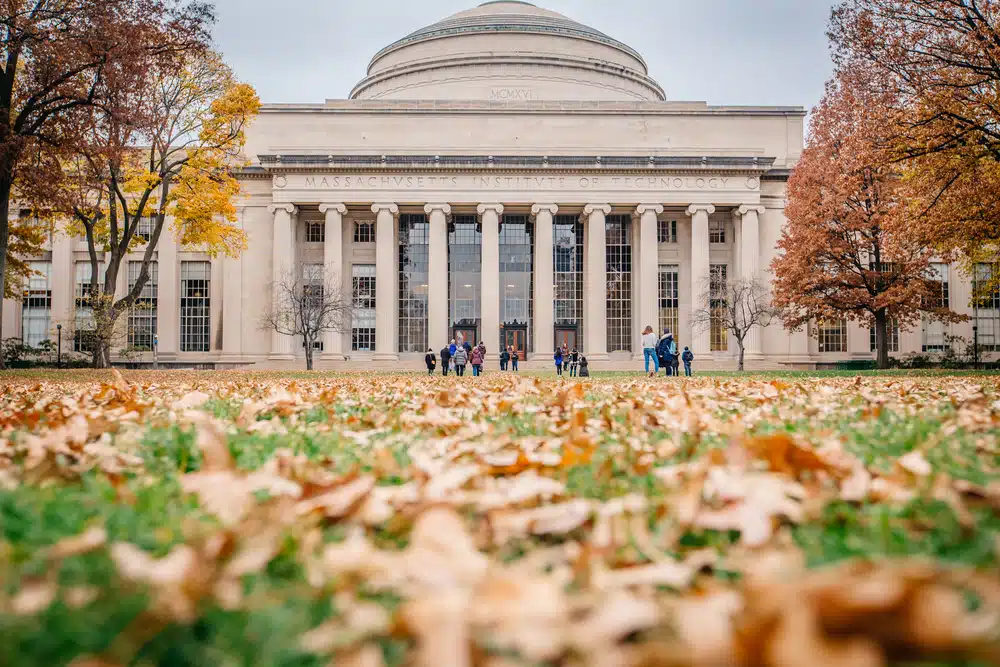Welcome to this blog post on understanding the MIT average GPA requirements for admission! If you’re a student interested in pursuing higher education, you’ve likely heard of the Massachusetts Institute of Technology (MIT). This prestigious university is world-renowned for its exceptional academic programs and groundbreaking research initiatives, and it consistently ranks among the top universities in the world.
With such a reputation, it’s no surprise that MIT is highly selective in its admissions process. Every year, thousands of students from around the globe apply to MIT in the hopes of gaining admission. However, only a small percentage of these applicants are successful in securing a spot at this esteemed institution.
So why are so many students eager to attend MIT? For one, the university offers a range of world-class academic programs in fields like science, engineering, and technology. Students at MIT have access to state-of-the-art facilities and resources, and they are taught by some of the most brilliant minds in their respective fields.
Additionally, attending MIT can open up a world of opportunities for students. Graduates of MIT are highly sought-after by employers in a range of industries, and many go on to make groundbreaking contributions to their fields.
Given all of these factors, it’s no wonder that students are eager to attend MIT. However, gaining admission to this prestigious university is no easy feat. One of the key factors that MIT considers in its admissions process is a student’s GPA. In the next section of this blog post, we’ll take a closer look at what MIT average GPA requirements you’ll need to meet in order to be considered for admission.
What is the MIT average GPA for admission?
What is the MIT average GPA for admission? Now that we’ve established the importance of GPA in the MIT admissions process, let’s dive deeper into what GPA range you should aim for if you’re hoping to gain admission to this prestigious university.

Based on available data and statistics, the average GPA for admitted students at MIT is typically around 4.0 on a 4.0 scale. However, it’s important to note that GPA is just one of many factors that MIT considers when evaluating applicants. The university takes a holistic approach to admissions, meaning that they consider a range of factors such as standardized test scores, extracurricular activities, and personal essays in addition to GPA.
Despite the fact that GPA is just one piece of the puzzle, it is still an important factor to consider. This is because a GPA can be an indicator of a student’s academic ability and potential for success in college-level coursework. At MIT, where the academic standards are notoriously rigorous, a high GPA can be a strong signal to admissions officers that a student is up for the challenge of navigating the university’s challenging curriculum.
However, it’s worth noting that there are some nuances to the MIT average GPA requirements for admission. For example, the university also considers standardized test scores such as the SAT or ACT.
In addition, applicants are typically required to submit a range of other application materials, such as essays, letters of recommendation, and a resume or CV. These materials can provide admissions officers with additional context about an applicant’s strengths, accomplishments, and potential for success at MIT.
How can students achieve the GPA needed for admission?
How can students achieve the GPA needed for admission? Now that we’ve discussed the MIT average GPA requirements for admission, you may be wondering how you can achieve the GPA needed to be competitive in the admissions process. Don’t worry – with hard work, dedication, and strategic planning, it is possible to achieve the GPA you need to pursue your academic goals.
One key strategy for achieving a high GPA is to take challenging courses. At MIT, admissions officers want to see that applicants have taken the most rigorous coursework available to them, as this is a strong indicator of a student’s academic potential. This may mean taking honors or Advanced Placement (AP) courses in high school, or pursuing a more challenging course load once you’re enrolled in college.
Another important factor in achieving a high GPA is developing strong study habits. This may involve finding a study routine that works for you, such as setting aside dedicated study time each day or breaking up your studying into smaller, more manageable chunks.
It may also involve seeking out resources such as tutoring or academic support services, which can help you stay on track and address any areas where you may be struggling.
Of course, it’s important to remember that achieving a high GPA isn’t just about academics – it’s also about balance. MIT admissions officers want to see that applicants are well-rounded individuals who are engaged in extracurricular activities, community service, and other pursuits outside of the classroom.
Balancing academics with other activities can be challenging, but it’s important to find a schedule and routine that work for you. This may mean prioritizing your time, setting realistic goals, and seeking out support and advice from mentors or peers.
What else matters in the admissions process?
What else matters in the admissions process? As we’ve discussed throughout this blog post, getting the MIT average GPA is an important factor in the admissions process – but it is far from the only factor that admissions officers consider. In fact, MIT takes a holistic approach to evaluating applicants, meaning that they consider a range of factors beyond just GPA.
One important factor that admissions officers consider is extracurricular activities. MIT is looking for students who are engaged and passionate, and who have demonstrated leadership skills, creativity, and a commitment to making a positive impact in their communities.
Students who have participated in clubs, sports teams, community service organizations, or other extracurricular activities can demonstrate these qualities and stand out in the admissions process.
Essays and recommendations are also important parts of the MIT application. Essays allow applicants to showcase their writing skills, creativity, and personality, while recommendations provide insights into an applicant’s character, work ethic, and potential for success at MIT. Applicants should take the time to craft thoughtful, well-written essays and to choose recommenders who can speak to their strengths and accomplishments.
Finally, admissions officers at MIT are looking for applicants who demonstrate a strong fit with the university’s values and mission. MIT is a place of innovation, collaboration, and intellectual curiosity, and applicants who can demonstrate these qualities are more likely to stand out in the admissions process.
This may mean highlighting experiences or accomplishments that showcase a passion for science, technology, engineering, or math, or demonstrating a commitment to using their skills to make a positive impact in the world.
Gaining admission to MIT is a highly competitive process that requires a combination of hard work, dedication, and strategic planning. As we’ve discussed in this blog post, one key factor that MIT considers in its admissions process is getting the MIT average GPA. While a high GPA is important, it is just one piece of the puzzle.
Admissions officers at MIT take a holistic approach to evaluating applicants, meaning that they consider a range of factors such as extracurricular activities, essays, recommendations, and personal characteristics that demonstrate a fit with MIT’s values and mission.
It’s important to remember that the admissions process can be challenging and stressful, but it’s also an opportunity to learn and grow. As you navigate the process, be sure to seek out resources and support, whether that means talking to your guidance counselor, seeking out tutoring or academic support services, or reaching out to mentors or peers who have gone through the process themselves.
With dedication, hard work, and support from others, you can increase your chances of success in the MIT admissions process and achieve your academic goals. Good luck!
If you want to discuss the matter to a greater extent or inquire about college admissions, look no further! Our experts here at AdmissionSight can definitely help you! Here at AdmissionSight, we have over a decade’s worth of experience guiding students through the competitive admissions process to get accepted to the top universities in the world. Feel free to set up an appointment today to book your initial consultation.






































